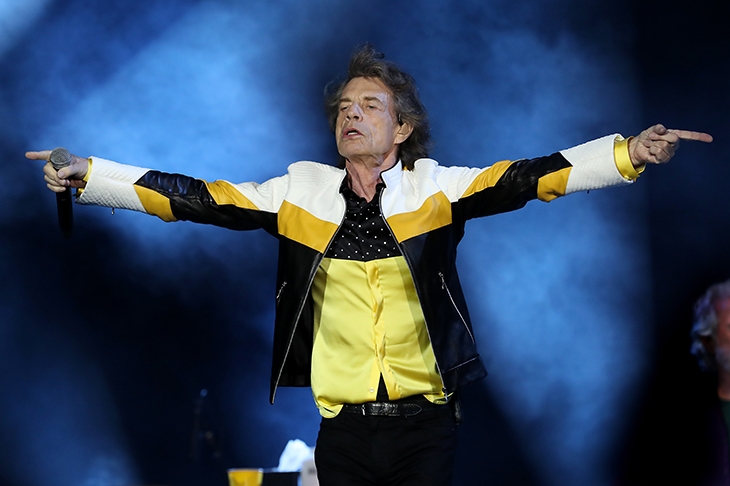At the end of 1969, teenage Rolling Stones fans reading the new Fab 208 annual could be forgiven for thinking that time wasn’t on their side:
After five years as Britain’s most controversial group, how much more moss can they gather before they call it a day? Will we ever see the world’s most exciting group ‘live’ again, and where do wicked Mick and Co. go from
here on?
Mick Jagger himself spoke of the dietary measures he had adopted to fortify his supposedly ancient 26-year-old body: ‘If you eat any old rubbish like lots of potatoes and take no exercise, then you end up looking like a potato — all knobbly knees and bloated.’ In the event, tubers notwithstanding, the Stones are still treading the boards half a century on from that chaotic year which provides the focus for Patrick Humphries’s excellent new book.
It was the year that saw the death of Brian Jones, the concert in Hyde Park, a US tour ending at Altamont Speedway, the single ‘Honky Tonk Women’ and the album Let It Bleed, which included ‘Gimme Shelter’ and ‘You Can’t Always Get What You Want’. Jagger also spent time in Australia playing Ned Kelly in Tony Richardson’s ill-advised film of that name, while his 1968 work in Nicolas Roeg’s and Donald Cammell’s unfinished Performance still sat on the shelf.
These events have been analysed many times, but Humphries — who first saw the Rolling Stones that year as a teenager — brings an engagingly fresh perspective, delivering his narrative in an amused, clear-eyed and balanced prose, using the prism of one key year around which to range forwards and back through the band’s history. He is also mindful of the inherent contradictions in a tale of Kent schoolboys singing the Delta blues, and that Jagger, who studied business at the LSE, could easily have wound up working in the City. Indeed, two or three years ago there was a fine cartoon in Private Eye showing a Reggie Perrin-like commuter saying to his wife: ‘Sorry I’m late, darling, I met a gin-soaked bar-room queen in Memphis…’
What is reaffirmed here is the sheer power and durability of the songs the Stones wrote during the wild final years of the 1960s, which can effortlessly fill a dance floor several generations later. For comparison, imagine the popular music current at the end of the first world war still selling out stadiums in the Woodstock era. Life magazine put the latter peace-and-love mud bath on the cover of its 15 September 1969 issue, yet the article directly following its report inside showed a shell-shocked Roman Polanski visiting the California house where his wife Sharon Tate had been brutally murdered a week before the festival. Altamont that December is often held to be the end of the 1960s dream, but the twisted Beatles fan Charles Manson and his homicidal followers had already poisoned the water some months before.
In this welcome addition to the canon of Rolling Stones studies, Humphries steers
a deft path through much-mythologised events, with a light touch and a wry ability to deflate some of the worst excesses of hippie pomposity to which the era was prone. He also draws an effective extended comparison between today’s Rolling Stones and the ageing gunslingers in Sam Peckinpah’s 1969 Western masterpiece, The Wild Bunch, saddling up for one last throw of the (tumbling) dice. ‘Ironically,’ he writes, ‘The Wild Bunch was funded by Warner Brothers, the same studio still dithering over the release of Performance around the same time.’ The link between the two films is even closer than that, because the studio head who initially pulled the plug on what Humphries refreshingly nails as ‘a wholly unsatisfactory mix of drug-culture babble, pseudo philosophy and dislocated narrative’ was Kenneth Hyman, who had earlier given Peckinpah the money to film The Wild Bunch and backed him to the hilt when the rest of Hollywood treated the director like a pariah.
That a band whose chart rivals when they released their debut single in 1963 were acts like Jim Reeves, Kenny Ball or Freddie and the Dreamers are still recording and touring is to be celebrated; that they are one of the biggest-selling live attractions in the world would be something beyond the wildest dreams of those journalists from Fab 208.






Comments